This article was co-authored by Laura Marusinec, MD. Dr. Marusinec is a board certified Pediatrician at the Children's Hospital of Wisconsin, where she is on the Clinical Practice Council. She received her M.D. from the Medical College of Wisconsin School of Medicine in 1995 and completed her residency at the Medical College of Wisconsin in Pediatrics in 1998. She is a member of the American Medical Writers Association and the Society for Pediatric Urgent Care.
There are 14 references cited in this article, which can be found at the bottom of the page.
wikiHow marks an article as reader-approved once it receives enough positive feedback. This article received 20 testimonials and 100% of readers who voted found it helpful, earning it our reader-approved status.
This article has been viewed 1,709,524 times.
Our body is a complex network of arteries and veins. Arteries carry blood to different areas and veins collect blood back to the heart. The veins that supply our rectum and anus sometimes get dilated and swollen with blood, forming a hemorrhoid. Hemorrhoids may be painful and can lead to bleeding if they rupture. Understand what causes hemorrhoids and try treating bleeding hemorrhoids at home. If bleeding and symptoms continue, know when to get the medical attention you need.
Things You Should Know
- Soak in a warm bath for 15-20 minutes to shrink the hemorrhoids and reduce irritation.
- Hold an ice pack wrapped in a towel against the hemorrhoids for a few minutes to reduce swelling and stop the bleeding.
- Apply a topical cream containing phenylephrine, which can help reduce the bleeding.
Steps
At-Home Treatment
-
1Soak in warm water or a sitz bath. To reduce irritation, ease pain, and help shrink the veins, soak the hemorrhoids for 15 to 20 minutes three times a day in warm, not hot, water.[1] If you don't want to run a bath, try a sitz bath, which is a plastic tub that goes over your toilet seat. This lets you soak your buttocks and hips while in a seated position. It can reduce irritation, spasms of the rectal muscle, and itching.[2]
- You can also place ¼ cup of sea salt in the sitz bath and sit 30 minutes at a time. Salt is an excellent antibacterial and is used to help with wound healing and drawing out infection.[3]
- You may also add witch hazel, known for being a soothing and cooling remedy for hemorrhoids. This should be done a minimum of once a day and the Sitz bath should last for anywhere between 15 and 20 minutes.[4]
-
2Apply an ice pack to the hemorrhoids. Place the ice pack in freezer until it's completely frozen. Take care not to apply the ice directly to the hemorrhoids. Instead, wrap the compress in a clean towel or cloth before pressing it gently on the hemorrhoids. Do not leave the pack on for long periods of time or it may damage the surrounding skin. It is best to apply for few minutes, remove it until your skin is back to room temperature and then apply it again.
- This will help reduce the pain and swelling by reducing inflammation.[5] It will also constrict the vessels which will stop the bleeding.
Advertisement -
3Apply a topical cream.[6] Try a topical cream with phenylephrine to constrict the vessels, which may reduce bleeding. You can also apply a cream to sooth the pain, irritation, and itching (which may cause bleeding). However, these will not stop the bleeding. Soothing creams can include hydrocortisone, aloe, witch hazel (herbal plant extract), and vitamin E.
- If you use hydrocortisone, apply it morning and night, but don't use it for more than one week.[7] Too much absorption may lead to an imbalance in your hypothalamus and pituitary hormones or cause the skin in the area to become thin.
-
4Use soft toilet paper and resist the urge to scratch. Rough toilet paper can scratch and/or irritate the skin even more. To soothe the pain and reduce irritation, use moist or medicated towelettes. You can also use witch hazel, hydrocortisone, aloe, or vitamin E medicated pads. Do not wipe aggressively, which can irritate or cause further bleeding. Pat or blot the area instead.
- Scratching will only increase the bleeding and irritation, causing extra stress on your already tender hemorrhoids. This could lead to further infection.
-
5Take supplements to reduce bleeding. Many of these supplements may be hard to find in drug stores, so check for them online and in herbal stores. Always talk with your doctor before taking supplements, especially if you're taking other medications. If you're pregnant or nursing, talk with your doctor before supplementing, since most of these have not been tested for use by pregnant or nursing women. These supplements or traditional medicines include:
- Fargelin extra: Take these traditional Chinese medicine tablets three or four times a day to strengthen veins which can reduce bleeding.[8]
- Oral Flavonoids: These have been shown to reduce bleeding, pain, itching, and recurrence. They increase vascular tone which reduces the leaking of tiny blood vessels (capillaries).[9]
- Calcium dobesilate or doxium tablets: Take these for two weeks and follow the packaged instructions. These drugs have been shown to decrease leaking of tiny blood vessels (capillaries), prevent clots, and improve blood viscosity. All of these things can reduce the swelling of tissues that cause hemorrhoids.[10]
-
6Reduce pressure on the hemorrhoids. This can help prevent or put less strain on the hemorrhoids. Eat a high-fiber diet to soften your stools and reduce constipation. Try to eat fruits, vegetables, and whole grains or take supplements (aim for 25 grams a day for women or 38 grams for men of total fiber). Drink plenty of fluids and establish regular bowel habits and especially avoid straining when having a bowel movement You should also avoid sitting for long periods of time which can increase pressure on your hemorrhoid veins, causing them to bleed. Exercise and walk to reduce the pressure.[11]
- Use a donut cushion to help ease your body weight off the affected area. To use it, sit on the center of the cushion with your anal area right over the gap. It may actually put more pressure on the anal area, so stop using it if your symptoms get worse or bleeding continues or starts again.
Medical Treatment
-
1Get a hemorrhoidectomy for external or internal hemorrhoids. This is the usual method for treating external hemorrhoids, especially if they are large or haven't responded to less invasive procedures. Your surgeon removes hemorrhoids with various tools such as scissors, scalpels, or a ligasure (device that delivers electrical current to seal bleeding hemorrhoids). You'll be sedated using a local anesthetic combined with sedation, a spinal anesthetic or a general anesthetic.[12] [13]
- Hemorrhoidectomy is the most effective and complete way to treat severe or recurring hemorrhoids. It can be painful, but medications, sitz bath, and/or ointments can be prescribed or used after the procedure for comfort.
- Compared with hemorrhoidectomy, stapling has been associated with a greater risk of recurrence and rectal prolapse, where part of the rectum protrudes from the anus.[14]
-
2Have a rubber band ligation for internal hemorrhoids. Your doctor will insert a probe through an anoscope (plastic device inserted in anus to view rectum). He will then attach a rubber band-like device at the base of the hemorrhoid. The device will cut off blood circulation and lead to the hemorrhoid scarring, which shrinks and eliminates the hemorrhoid after a time.[15]
- You may feel uncomfortable after the procedure. Get some relief by using a sitz bath, warm water soaks, and/or topical ointment.
-
3Get injection (sclerotherapy) for internal hemorrhoids. Your doctor will use a plastic device inserted into the anus to view the rectum (anoscope). The doctor will use it to inject a needle with chemical solutions such as 5% phenol in oil, vegetable oil, quinine, and urea hydrochloride or hypertonic salt solution at the base of the hemorrhoids. These chemical solutions will cause the veins to shrink.
- Sclerotherapy is considered less effective than rubber band litigation.[16]
-
4Have laser or radio treatment (infrared coagulation) for internal hemorrhoids. Your doctor may use infrared lasers or radio frequencies to coagulate the veins near the hemorrhoids. If the infrared method is used, a probe is applied to the base of the hemorrhoid. If a radio frequency is used, a ball electrode is connected to a radio-frequency generator. This is placed on the hemorrhoidal tissue, which causes it to coagulate and evaporate.
- Infrared treatments are more likely to result in recurring hemorrhoids, compared to rubber band litigation.[17]
-
5Get cryotherapy for internal hemorrhoids. Your doctor will use a probe capable of applying cold temperatures to the base of the hemorrhoid. This should cause destruction of the tissue. But, this method isn't used very often, since the hemorrhoids usually return.[18]
-
6Staple the internal hemorrhoids. Your surgeon will use a device to staple slipped or prolapsed internal hemorrhoids back within the anal canal. This will cut off the blood supply to the hemorrhoids so the tissue eventually dies and stops bleeding.[19]
- The recovery time is usually faster and involves less pain than a hemorrhoidectomy.[20]
Understanding Hemorrhoids
-
1Learn the causes of hemorrhoids. Chronic constipation, straining, and long periods of sitting on the toilet are causes associated with hemorrhoids. These can all put more pressure on and block your veins, impairing circulation. Pregnancy is another condition that puts a lot of pressure on these veins, especially during delivery when straining happens and can lead to hemorrhoids.
- Hemorrhoids are more common as you get older and in people who are overweight.
- Hemorrhoids can either be internal (inside the rectum) or external (around the outside of the anus). Internal hemorrhoids are painless while external ones are painful. But, both types can lead to bleeding if they rupture.[21]
-
2Recognize the symptoms of hemorrhoids. If you have internal hemorrhoids, it may be hard to see symptoms until they are bleeding and they'll probably be painless. But, if you have external hemorrhoids, several symptoms will appear including:[22]
- Painless bleeding during bowel movements. There won't be very much blood and it will be bright red.
- Itching or irritation in your anal region.
- Pain or discomfort.
- Swelling around your anus.
- A sensitive or painful lump of tissue near your anus.
- Leaking feces.
-
3Check to see if you have hemorrhoids. Look in the mirror with your back turned to it and note any lumps or mass-like protrusions around your anus. The color may vary from your normal skin tone to darker red. It may be painful if you press on the lumps. If so, you probably have external hemorrhoids. Pay attention to any blood on the toilet paper after you use the bathroom and wipe. Hemorrhoid blood is usually bright red, rather than dark (which could indicate bleeding from somewhere deeper in your digestive system).
- It can be hard to see internal hemorrhoids at home without the right tools. Make an appointment with your doctor. You'll be asked to give a detailed medical history to catch any other possible reasons for bleeding such as colon cancer and polyps, since both of these masses can bleed.
-
4Know when to see a doctor. If you still have symptoms or pain after a week of home remedies, you should see your doctor for an exam. Bleeding can be a cause for concern, especially if you're at risk for or have another condition, like inflammatory bowel disease or colon cancer. You should also get medical attention if the blood is dark red or your stools are dark/tarry in color. These can mean there's bleeding higher up in your intestines or from a bleeding mass.[23]
- Try to estimate how much blood you've lost. If you start to feel fatigue/anxiety, look pale pale, have cold hands or feet, a high heart rate, or confusion accompanied by blood loss, you should see your doctor immediately. You should also be examined if the amount of blood has increased.[24]
-
5Know what to expect from a medical examination. Your doctor will determine if you have hemorrhoids by looking at the outside of your anus and performing a digital rectal exam. Your doctor will insert a lubricated index finger to feel the walls of your rectum for lumps, masses, and look for any blood. If it's suspected that you have internal hemorrhoids, the doctor may insert an anoscope (a plastic tube) through your anus into the rectum. This lets the doctor shine a light and look for swollen, distended, or bleeding veins.
- Your doctor may do a guaiac test, which involves a smear of fecal matter on a strip of paper. This can detect microscopic blood cells within the feces, which can indicate several conditions including hemorrhoids, colon cancer, and polyps.
- If you do have a guaiac test, it is important not to eat red meat, turnips, radish, horseradish, cantaloupe or uncooked broccoli three days before, since they can cause false positive results.[25]
References
- ↑ Hemorrhoids. Lifestyle and Home remedies. Mayo Clinic. June 19, 2013 http://www.mayoclinic.org/diseases-conditions/hemorrhoids/basics/lifestyle-home-remedies/con-20029852
- ↑ Hemorrhoids and what to do about them. Harvard Health publications. http://www.health.harvard.edu/diseases-and-conditions/hemorrhoids_and_what_to_do_about_them
- ↑ Jacoby C. Sitz Bath Recipe. Health Guidance. http://www.healthguidance.org/entry/14749/1/Sitz-Bath-Recipe.html
- ↑ Jacoby C. Sitz Bath Recipe. Health Guidance. http://www.healthguidance.org/entry/14749/1/Sitz-Bath-Recipe.html
- ↑ http://www.mayoclinic.org/diseases-conditions/hemorrhoids/basics/lifestyle-home-remedies/con-20029852
- ↑ Lohsiriwat V. Hemorrhoids: From basic pathophysiology to clinical management. World Journal of gastroenterology. 2012 May 7; 18(17): 2009–2017.
- ↑ Bleday R. Patient information: Hemorrhoids (Beyond the Basics). UptoDate. Jan 8, 2015. http://www.uptodate.com/contents/hemorrhoids-beyond-the-basics
- ↑ Kecskes A. Soothing, Natural cures for hemorrhoids. Pacific College of Oriental Medicine. 2014.
- ↑ Lohsiriwat V. Hemorrhoids: From basic pathophysiology to clinical management. World Journal of gastroenterology. 2012 May 7; 18(17): 2009–2017.
- ↑ Mentes BB. et al. Efficacy of calcium dobesilate in treating acute attacks of hemorrhoidal disease. Diseases of the colon and rectum. 2001 Oct;44(10):1489-95.
- ↑ Prevention. Hemorrhoids. Mayo Clinic. June 19, 2013. http://www.mayoclinic.org/diseases-conditions/hemorrhoids/basics/prevention/con-20029852
- ↑ Lohsiriwat V. Hemorrhoids: From basic pathophysiology to clinical management. World Journal of gastroenterology. 2012 May 7; 18(17): 2009–2017.
- ↑ Treatments and Drugs. Hemorrhoids. Mayo Clinic. June 19, 2013. http://www.mayoclinic.org/diseases-conditions/hemorrhoids/basics/treatment/con-20029852
- ↑ Treatments and Drugs. Hemorrhoids. Mayo Clinic. June 19, 2013. http://www.mayoclinic.org/diseases-conditions/hemorrhoids/basics/treatment/con-20029852
- ↑ http://www.mayoclinic.org/diseases-conditions/hemorrhoids/basics/treatment/con-20029852
- ↑ http://www.mayoclinic.org/diseases-conditions/hemorrhoids/basics/treatment/con-20029852
- ↑ http://www.mayoclinic.org/diseases-conditions/hemorrhoids/basics/treatment/con-20029852
- ↑ http://www.surgery.ucsf.edu/conditions--procedures/hemorrhoids.aspx
- ↑ Lohsiriwat V. Hemorrhoids: From basic pathophysiology to clinical management. World Journal of gastroenterology. 2012 May 7; 18(17): 2009–2017.
- ↑ http://www.mayoclinic.org/diseases-conditions/hemorrhoids/basics/treatment/con-20029852
- ↑ Hemorrhoids and what to do about them. Harvard Health publications. http://www.health.harvard.edu/diseases-and-conditions/hemorrhoids_and_what_to_do_about_them
- ↑ http://www.mayoclinic.org/diseases-conditions/hemorrhoids/basics/symptoms/con-20029852
- ↑ http://www.mayoclinic.org/diseases-conditions/hemorrhoids/basics/symptoms/con-20029852
- ↑ http://www.mayoclinic.org/diseases-conditions/hemorrhoids/basics/symptoms/con-20029852
- ↑ Stool Guaiac test. MedlinePlus. October 14, 2013. http://www.nlm.nih.gov/medlineplus/ency/article/003393.htm
About This Article
Bleeding hemorrhoids can be extremely uncomfortable, but you can get some relief by soaking in a warm bath for 15 to 20 minutes, 3 times a day. Just make sure the water is warm, not hot, as it will help reduce irritation and help shrink the veins that cause hemorrhoids. For extra healing power, add ¼ cup of sea salt to the bath water, since salt is an excellent antibacterial and can help draw out the infection. Alternatively, you can wrap a freezer pack in a clean cloth and press it gently against the hemorrhoids for a few minutes to constrict the blood vessels and stop any bleeding. You might damage your skin if you leave the pack on for too long, so let your skin get back to room temperature before applying it again. For more advice from our Medical co-author, including how to adjust your diet to ease your hemorrhoids, read on!
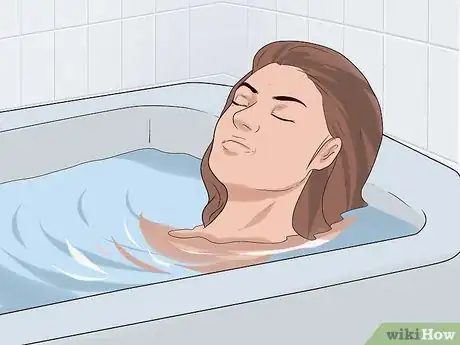
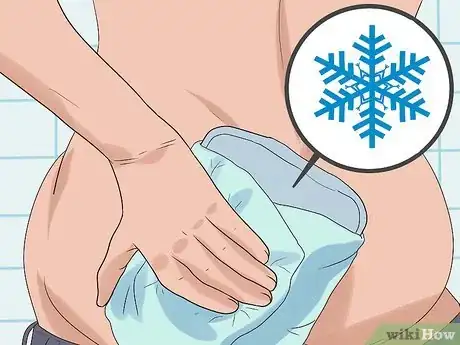
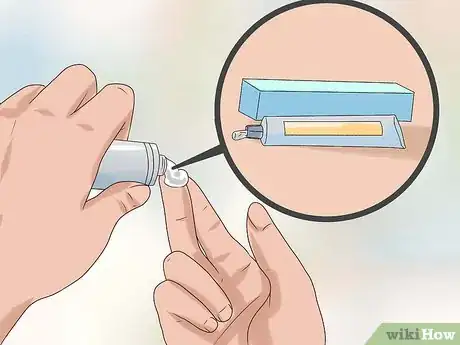
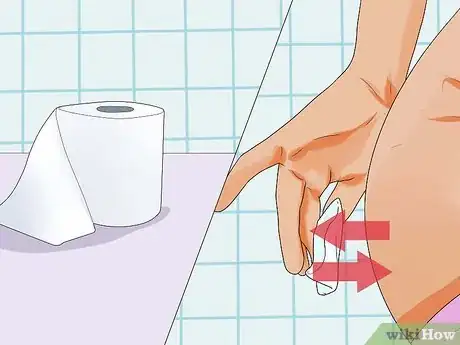
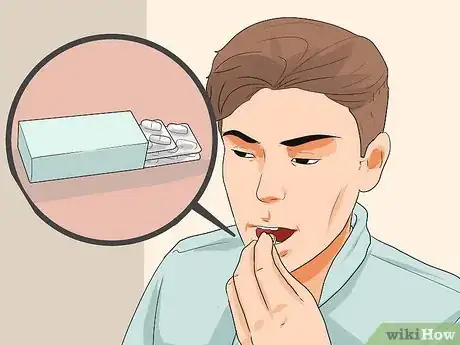
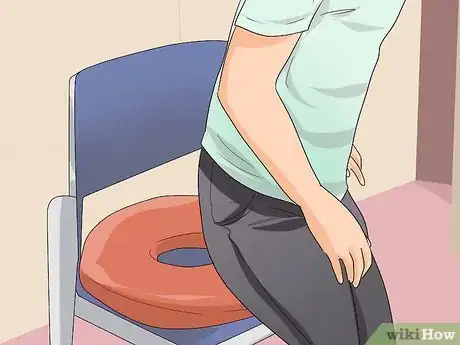
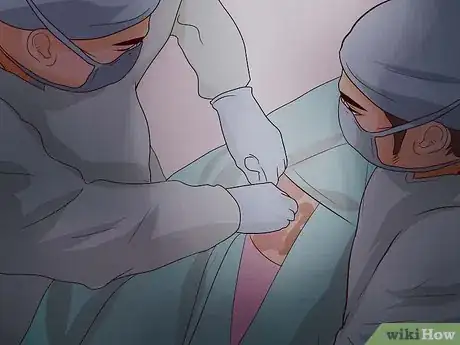
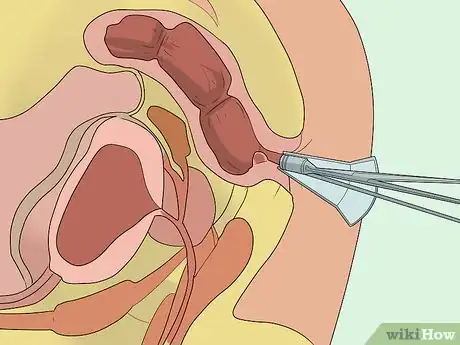
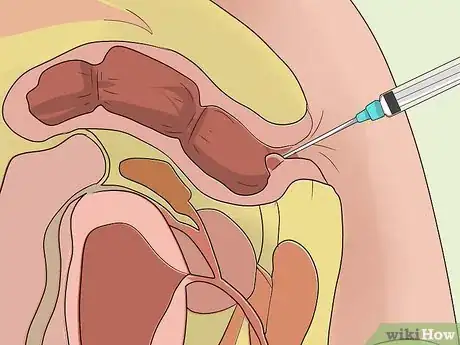
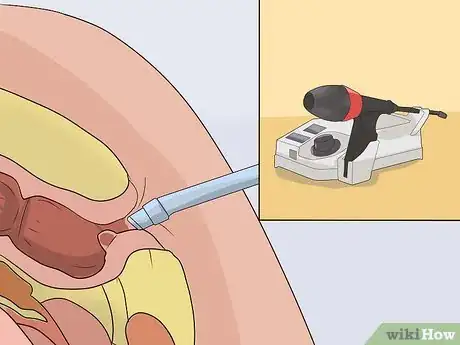
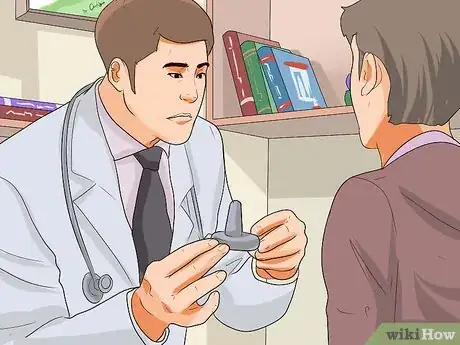

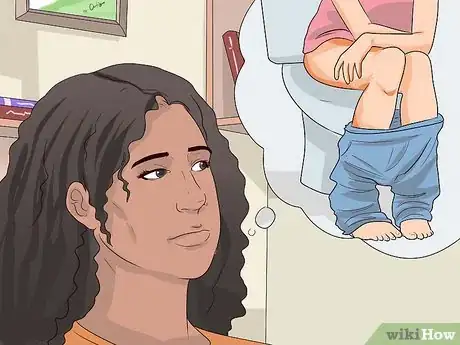
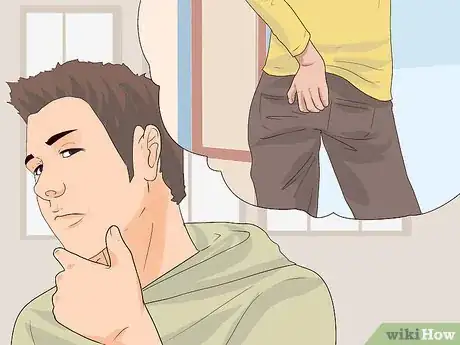
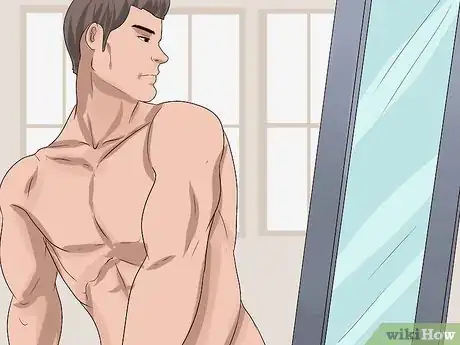
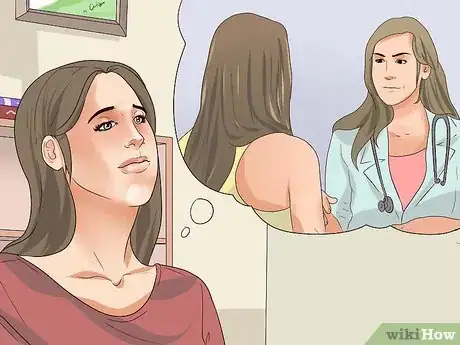
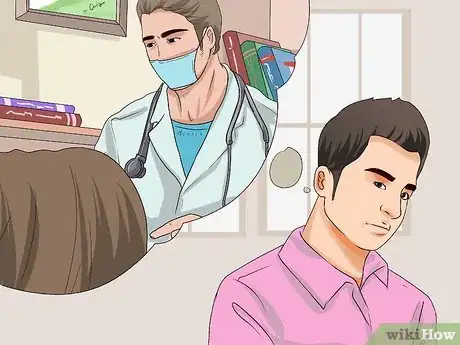
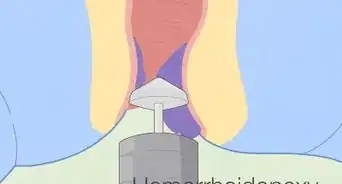
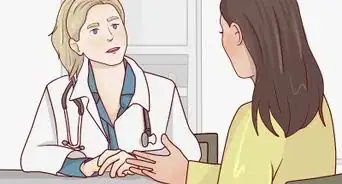
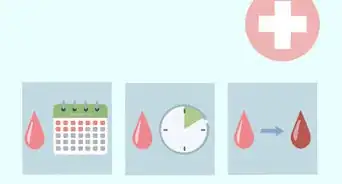
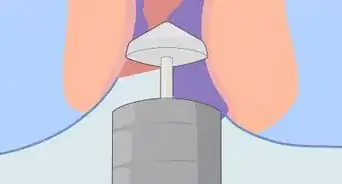
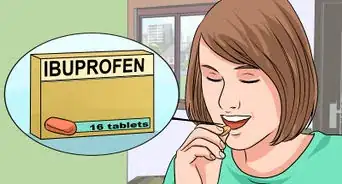

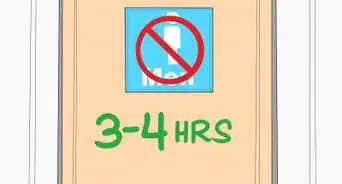
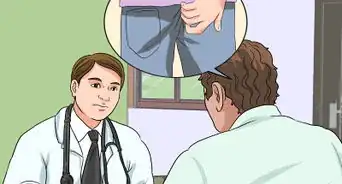
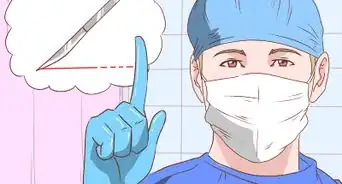
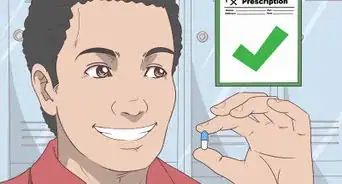
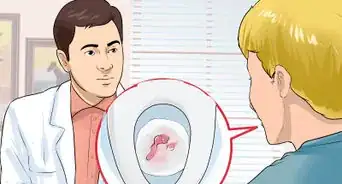
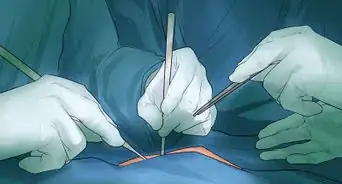

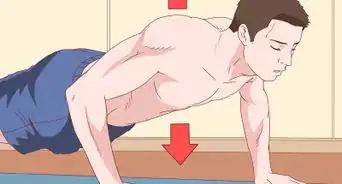









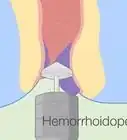
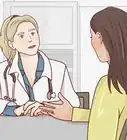

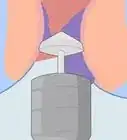



































Medical Disclaimer
The content of this article is not intended to be a substitute for professional medical advice, examination, diagnosis, or treatment. You should always contact your doctor or other qualified healthcare professional before starting, changing, or stopping any kind of health treatment.
Read More...